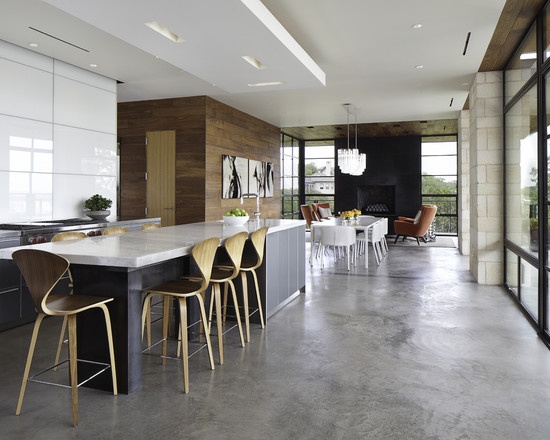It can be overwhelming how many different materials are available to you when building or renovating your home. As well as wanting the best products for the job, many people these days are interested in using sustainable materials and reducing their impact on the environment as much as possible. To help you decide on what sustainable materials you might be able to incorporate into your next project, I have created a quick guide below, focussing on hard surface materials, in particular flooring.
Wooden flooring:
- If you are lucky enough to move into a older home with floor boards already laid, consider refurbishing them rather than purchasing and laying a new surface. Often a wood floor that looks like its past its prime simply needs some love and care and can look amazing when refurbished well.
- If you need to lay a new floor, consider reclaimed timber. While it may cost slightly more, reclaimed timber can have wonderful character and is a fantastic way to reduce the amount of new timber needed especially when building a new home. If you are in South Australian try: Adelaide Rural Salvage or Adelaide Hills Building Materials to see what options they have available.
- If the above two options are not possible, make sure you choose wooden floors that are from managed forests and are FSC certified, meaning they are sustainably harvested. It is also important to purchase timber grown as locally to you as possible, to reduce transport and therefore, pollution on the environment. Many flooring companies usually have an FSC certified option available, just ask! Additionally, FSC certified products can be used in many parts of the home, not just for flooring.
Rapidly renewing/recycled flooring:
• Bamboo is a fantastic green option to install as flooring. It grows quickly and is extremely hard, as hard or even harder than some hard woods. It re-grows in 3-7 years compared to oak or pine that takes around 20. Another great feature – its generally much cheaper than FSC certified hardwood. Bamboo comes in many colours and styles and looks fantastic, in some cases people cannot even tell it is not a hardwood, but a grass! I purchased my bamboo floors through Bamboo Flooring SA and am very happy with the results.
• Cork is made from bark that has been peeled from Cork Oak (Quercus Suber), and if harvested correctly, does not harm the tree itself. It is a wonderful choice for homes as it provides cushioning and absorbs sound. It is a great insulator, hygienic, anti-allergenic and water resistant and is easy to maintain. Have a look at Premium Floors for some examples of cork flooring, including the ability to digitally print onto the cork flooring and achieve a natural timber look!
• Linoleum (not to be confused with vinyl) is manufactured from dried and milled flax seeds mixed with other plant material (including cork) and in many cases from recycled content. It is extremely durable, fire resistant and can last for 30 to 40 years. Additionally, when its lifecycle comes to an end, linoleum is biodegradable and can be composted! An example of marmoleum and its fantastic colour range is distributed by Forbo (also GECA certified – see link further below)
- Recycled rubber flooring is a great choice for spaces for young children, basements, yoga studios or home gyms and is an anti-slip, non-laminated surface with excellent noise absorbing qualities and is easy to clean and maintain (Check out Regupol for some more info)
- Carpet – some carpets and rugs are now made from sustainable or natural fibers such as cotton, sisal, wool, jute and coconut husk. See Carpet court for an example of Australian manufactured carpet that uses yarn made with renewably sourced polymer, which consists of 37% natural corn sugar. To reduce wastage, unused parts of the corn are utilised for agricultural feedstock.
- Armadillo & Co also have a fantastic range of hand woven, Fair Trade rugs made from sustainable natural fibres (Armadillo & co)
- Carpet tiles especially if made from recycled or refurbished carpets) are also a great choice as if moisture, stains or wear occurs, you can simply replace the individual carpet tile rather than the whole floor. Some companies (e.g. Ontera) go a step further and have a reuse and recycle program, where you can return the carpet tiles to be recycled after use!

Ontera modula carpets were used in this bright and fresh office project (Norman Disney & Young), showing the look that can be achieved using carpet tiles
Cork, linoleum, recycled rubber flooring and some carpets and carpet tiles are also all Good Environmental Choice Australia accreditated.
Hard surface flooring
- Consider refurbishing a concrete floor. Advances in grinding, hardening, colouring and polishing mean old slabs can be given amazing new life. If you must choose a new cement floor, make sure you specify a cement with fly ash content (a recycled product).
- Concrete, terrazzo, natural stone and ceramic tile are the longest lasting of floor materials. Ceramic tile has the advantage of achieving the look of wood or natural stone without ever having to re-finish or seal the tile. Also, you can replace individual tiles instead of entire sections. Tile and terrazzo floors can also be made with pre and post recycled content.
Dont forget, products are constantly changing, with new sustainable options on the market every day – be sure to ask your local retailers what is available in your area, and dont be afraid to do you own research online.




